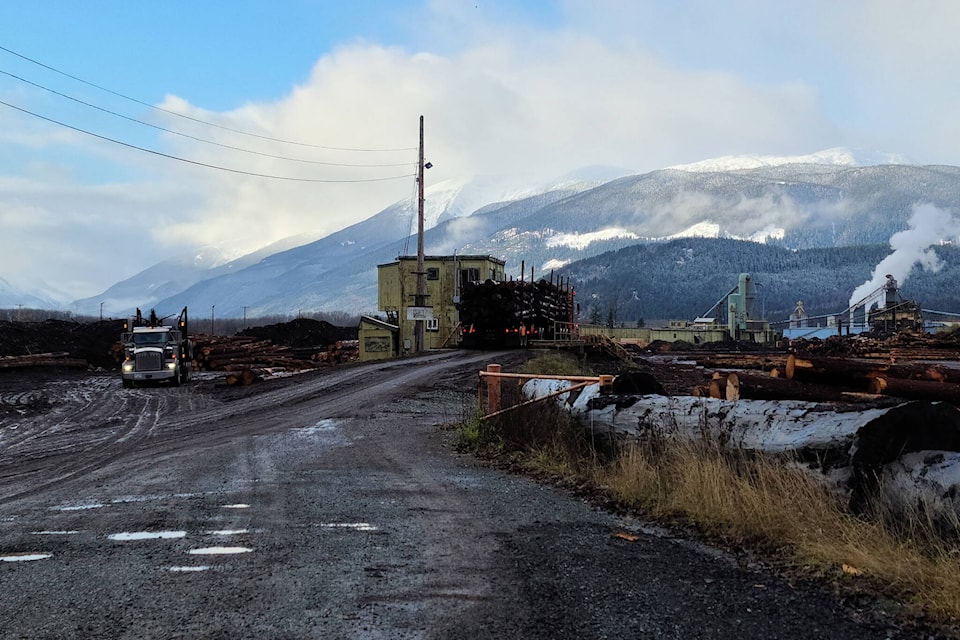Skeena Sawmills re-opened this week after being closed last week when it didn’t have enough logs to keep operating.
“We have had problems getting logs due to fire restrictions during the summer, rain, road washouts, and now snow,” said Skeena Sawmills official Roger Keery in outlining the mill’s challenges.
“Going back to the second quarter of 2021, we have never been able to build an adequate log inventory to maintain production through these interruptions.”
Compounding the problem is a limited number of contractors who themselves have troubles hiring and keeping employees in the COVID era, Keery continued.
“This is particularly true of truck drivers and this has limited their capacity to deliver wood. Keeping ahead of mill consumption has been a challenge all year,” he said.
“We lost more than a month of our chip production program this fall because of a shortage of chip truck drivers and now its logging truck drivers. This has caused ongoing difficultly in meeting our log production budget.”
The mill’s sister company, next door pellet-producing Skeena Bioenergy was also being threatened with closure last week.
The massive rain-caused flooding two weeks ago in southern B.C. which washed out rail tracks and bridges is affecting its ability to ship out its product.
“Our wood pellets, as at time of writing, cannot ship to Vancouver so as we run out of railcars, that operation will be forced to close as well,” said Keery as of Nov. 23.
“The positive side of this is that product is still moving through Prince Rupert, albeit slowly, and the port has been very supportive of our business.”
Weather events and COVID are just a few of the challenges facing Skeena Sawmills since its purchase from West Fraser by Chinese owners in 2011. At the time of sale the mill had not produced lumber since 2007.
The increasing length of time it is taking to get cutting permits, stumpage or royalties paid to the province and, just recently, the province’s intention to increase the amount of old growth trees to be protected all weigh on the mill’s ability for a consistent log supply, Keery said.
One positive note is the company’s wood supply agreements with First Nations who have grown to become major players in the region’s logging industry.
“These have been very effective in keeping the mill going. We are working on growing and expanding these arrangements as we move forward. With all the complexities of this business, it is very clearly a team effort and when any part doesn’t succeed, we all fail,” said Keery.
The company has also been trying to raise the capital needed to buy the equipment needed so that it can cut smaller diameter wood.
“Fibre security or the lack of it and the history of milling in our area have made securing capital difficult,” said Keery.
The company does export wood but it’s only a small amount — 7,300 cubic metres or two per cent of the 400,000 cubic metres delivered to its yard so far this year
“We try to sell or trade material that we can’t process or where we can trade logs to exporters and reduce costs to deliver to the mill,” said Keery.
“For example, we sold a block of standing timber that was only accessible by water and the purchaser exported some of this. Sending it to the sawmill was cost prohibitive.”
